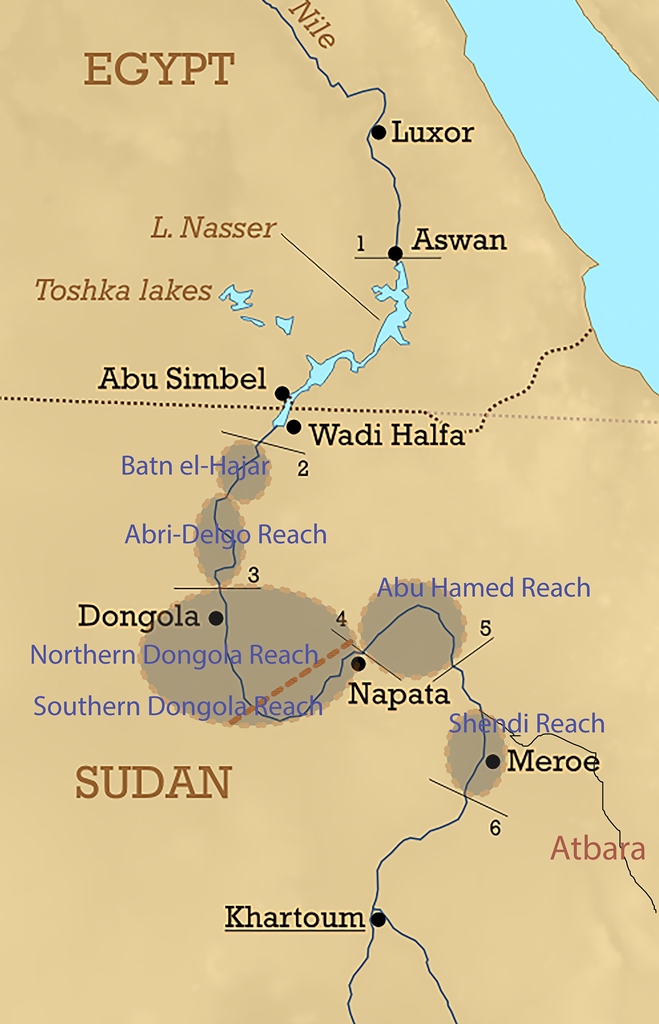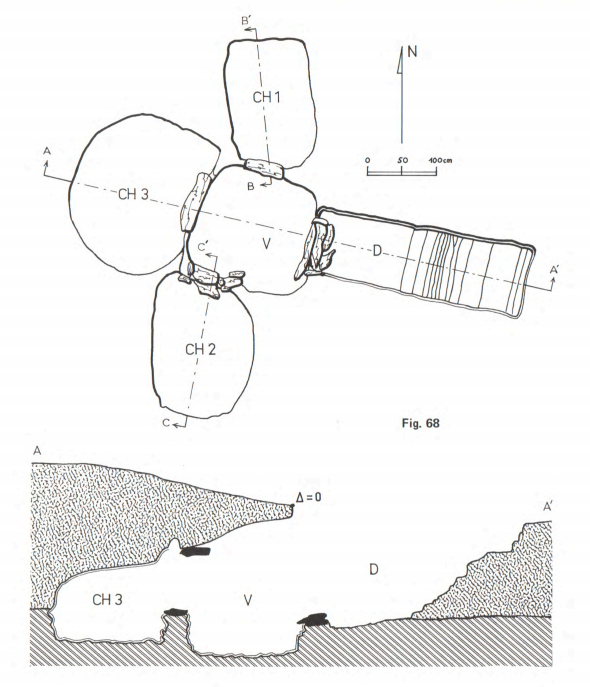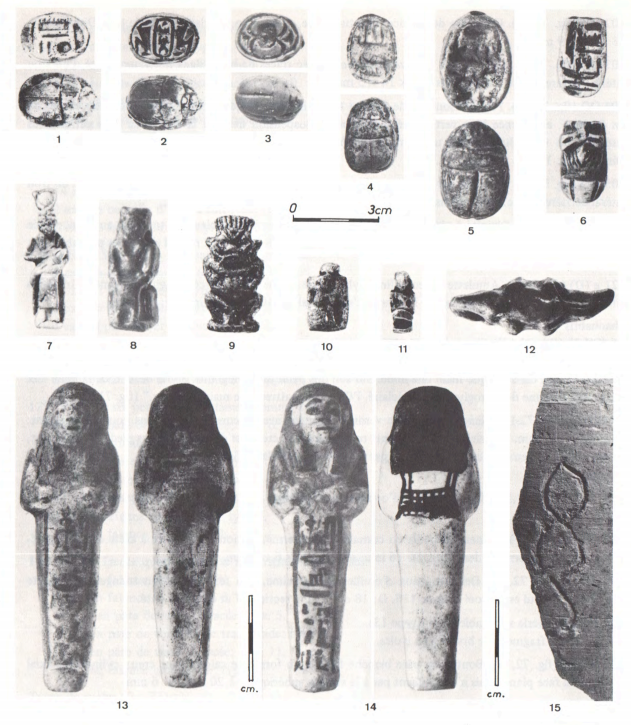As recently outlined by Rennan Lemos, a remarkable tomb of Ramesside date was found by Vila in Ginis West. We identified this monument during our survey in 2019 and it clearly once had a tumulus superstructure; the descent to the rock-cut chambers is still visible. Some broken pottery as well as bone fragments are scattered around the superstructure, but otherwise this structure is isolated and cannot be associated with burial monuments (apart from a few Christian tombs close by).
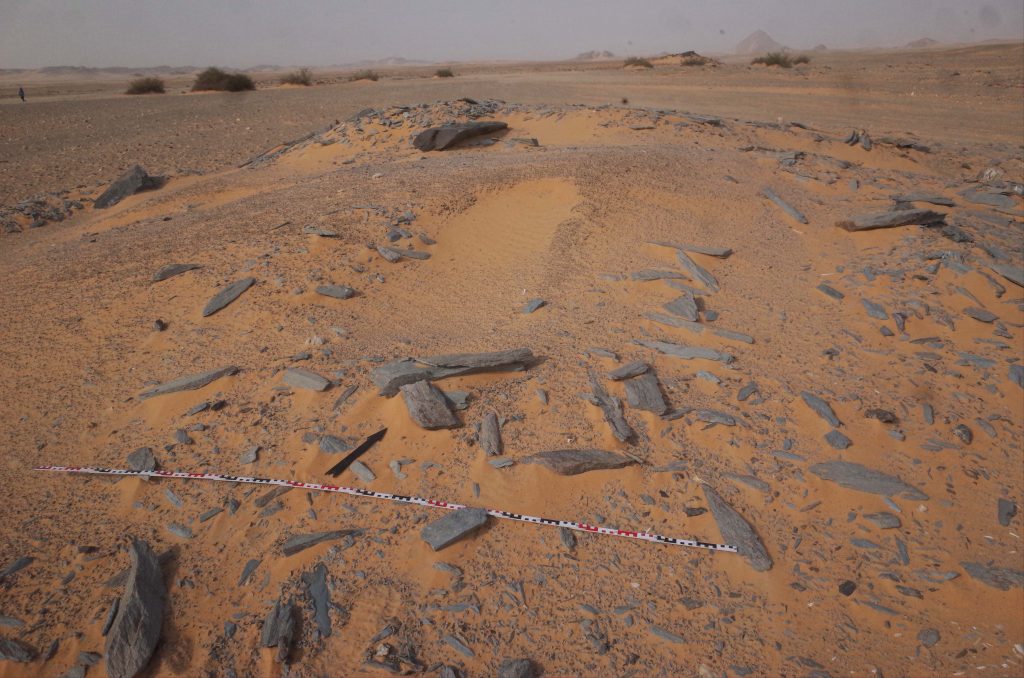
A look at the distribution map of New Kingdom sites in our MUAFS concession (see Budka 2020, 65, fig. 14) is useful for a tentative contextualisation of the tomb which, among others, yielded shabtis of the lady of the house, Isis (Vila 1977, 151). The New Kingdom sites are clustered within the southwestern part of the research area, thus close to the urban sites Amara West and Sai Island. The role of these administrative centres Amara West and Sai Island needs to be considered when looking at the ‘periphery’ (cf. Spencer 2019; see also Stevens and Garnett 2017) and might have influenced the pattern of site distribution. The latter, however, is still preliminary as I pointed out in a earlier post.
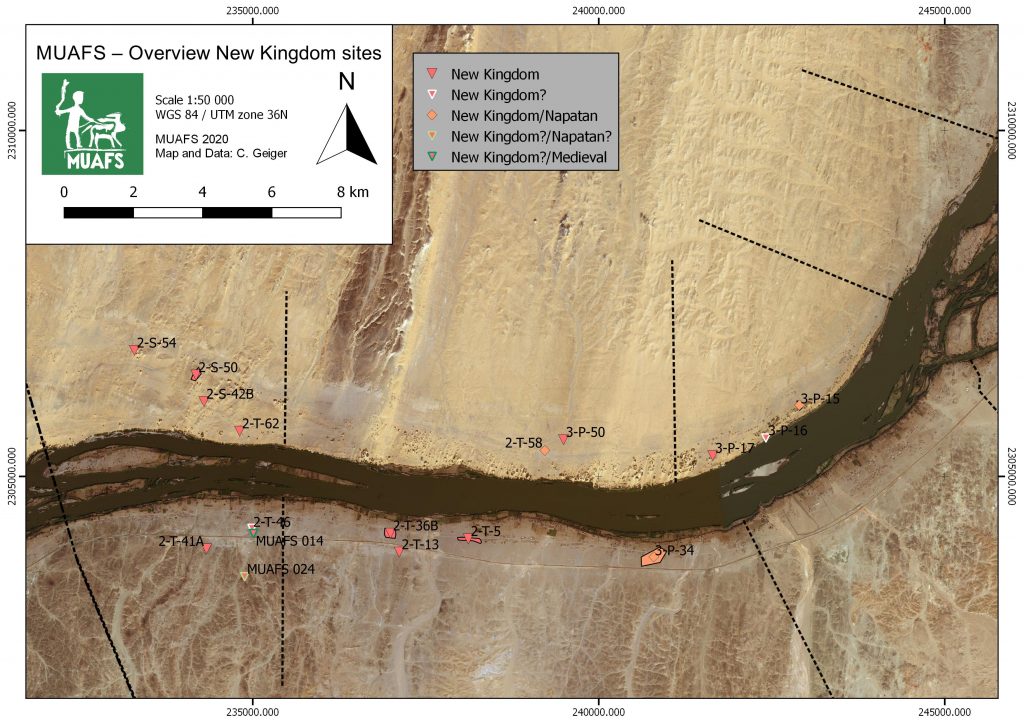
The closest possible New Kingdom site located in the neighbourhood of 3-P-50 is 2-T-58. This site is a small cemetery of several tumuli which can be attributed to the Late New Kingdom and/or the Pre-Napatan period. Unfortunately, 2-T-58 was already very much destroyed and plundered in the 1970s. There is little hope that more information than gathered by Vila can be gained from these tombs (Vila 1977, 119-122, figs. 53-54).
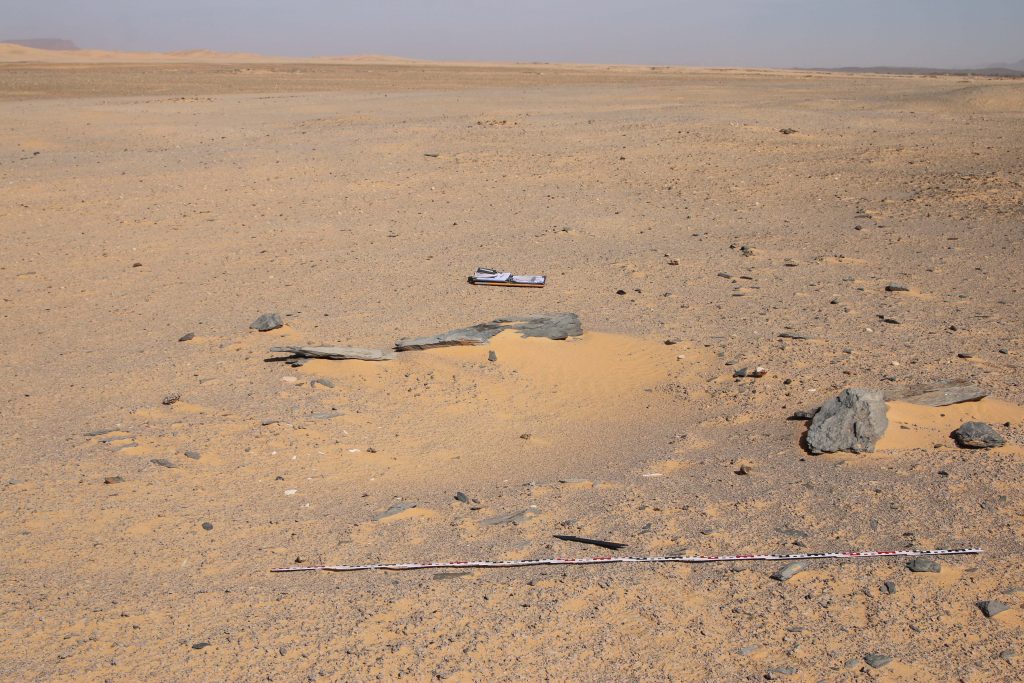
Vila excavated one of the tombs and found the remains of four burials, of funerary beds, bodily adornment like beads and amulets and some ceramic vessels which seem to date to the late Ramesside period and the Pre-Napatan phase, finding close parallels at Amara West (Binder 2014, passim) and also at Hillat el-Arab (Vincetelli 2006, passim). A post-New Kingdom date is maybe the most likely for this excavated tumulus and its interments.
Especially interesting and most probably contemporaneous to the isolated tomb 3-P-50 is site 3-P-15 in Kosha West which is part of a cluster formed by three settlement sites (3-P-15, 3-P-16 and 3-P-17).
This habitation site on a mound of c. 55-100m shows a surface covered by schist blocks and sherds. In the northeastern part, remains of mud bricks are visible. The surface ceramics we documented show a continuation from late Ramesside times well into the ninth and maybe even the eight century BCE, thus into the Napatan era.
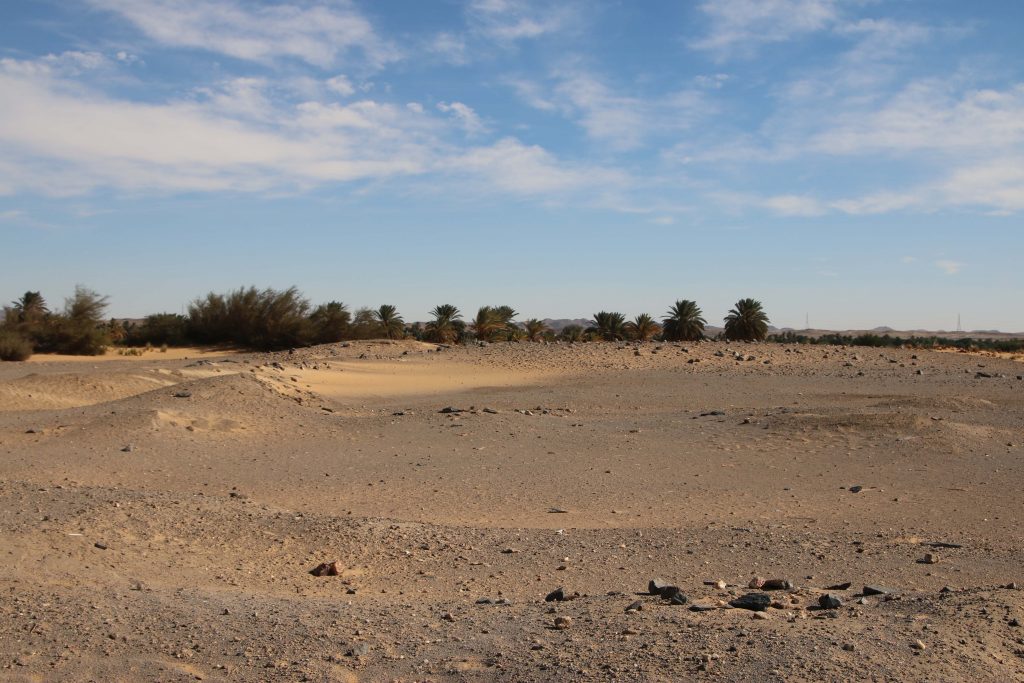
A more precise dating and a concise characterisation will require excavations – but the site seems to have been in use during the time the cemeteries at Amara West flourished and 3-P-50 was built. As already pointed out by Michaela Binder, the best parallel for 3-P-50 is tomb G244 at Amara West (Binder 2014, Binder 2017, 599-606). The latter is the largest multi-chambered tomb at Amara West with a tumulus as superstructure and, like 3-P-50, also situated in what seems to have been an isolated position during the 20th Dynasty. Maybe these tombs, their architecture, their seemingly isolated location and rich equipment (which is an intriguing mixture of Egyptian- and Nubian-style material culture) point to common aspects of local elite communities in the Amara and Ginis regions we are still far away from understanding in detail.
Our planned excavations at 3-P-15 and especially the joint efforts of Rennan Lemos focusing on the mortuary evidence and Veronica Hinterhuber on the settlement remains will hopefully allow a closer assessment of the Ramesside period in the MUAFS concession and corresponding lived experiences in the near future.
References
Binder, M. 2014. Health and Diet in Upper Nubia through Climate and Political Change. A bioarchaeological investigation of health and living conditions at ancient Amara West between 1300 and 800 BC. Unpublished PhD thesis, Durham University.
Binder, M. 2017. The New Kingdom tombs at Amara West: Funerary perspectives on Nubian-Egyptian interactions, in: N. Spencer, A. Stevens, and M. Binder (eds), Nubia in the New Kingdom. Lived experience, pharaonic control and indigenous traditions. British Museum Publications on Egypt and Sudan 3. Leuven, 591-613.
Budka, J. 2020. Kerma presence at Ginis East: the 2020 season of the Munich Universit Attab to Ferka Survey Project, Sudan and Nubia 24, 57-71.
Spencer, N. 2019. Settlements of the Second Intermediate Period and New Kingdom, in D. Raue (ed), Handbook of ancient Nubia, vol. 1. Berlin, 433-464.
Stevens, A. and A. Garnett 2017. Surveying the pharaonic desert hinterland of Amara West, in: N. Spencer, A. Stevens, and M. Binder (eds), Nubia in the New Kingdom. Lived experience, pharaonic control and indigenous traditions. British Museum Publications on Egypt and Sudan 3. Leuven, 287-306.
Vila, A. 1977. La prospection archéologique de la Vallée du Nil, au Sud de la Cataracte de Dal (Nubie Soudanaise). Fascicule 5: Le district de Ginis, Est et Ouest. Paris.
Vincentelli, I. 2006. Hillat El-Arab. The Joint Sudanese-Italian Expedition in the Napatan Region, Sudan. Sudan Archaeological Research Society Publication 15. British Archaeological Reports International Series 1570. Oxford.

